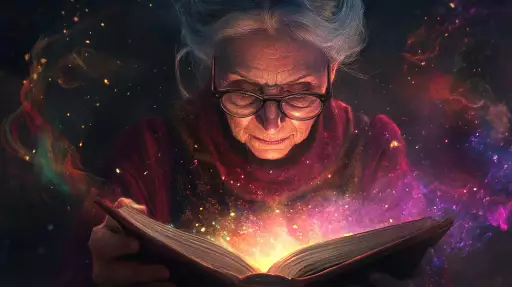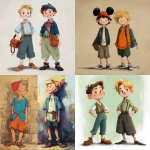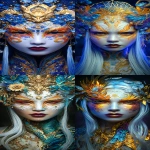Explore the Best AI Image Gallery

Beyond the Canvas: Exploring the Ethical Frontiers of AI-Generated Media
The realm of creativity is undergoing a profound transformation fueled by the emergence of Artificial Intelligence (AI). AI-powered tools are now capable of generating stunning visuals, composing captivating music, and crafting compelling narratives, blurring the lines between human and machine artistry. This unprecedented ability presents both exciting opportunities and complex ethical challenges that demand careful consideration.
The AI Creative Revolution: Transforming Industries
AI-generated media is already making its mark across various sectors:
- Advertising and Marketing: AI can create personalized ads, generate unique marketing content, and even design captivating product prototypes.
- Entertainment: From writing scripts and composing soundtracks to generating realistic special effects, AI is revolutionizing film, gaming, and music production.
- Design and Art: AI-powered tools can assist designers in creating logos, fashion designs, and even architectural blueprints. Artists are exploring AI as a collaborative partner, leveraging its capabilities to enhance their creative process.
The Promise of Potential: Unleashing New Creative Frontiers
AI-generated media holds immense potential to:
- Democratize Creativity: By providing accessible tools, AI can empower individuals without formal training to express themselves creatively.
- Accelerate Innovation: AI can rapidly generate ideas and concepts, accelerating the pace of innovation in various fields.
- Personalize Experiences: AI can tailor content and experiences to individual preferences, creating more engaging and immersive interactions.
Navigating the Ethical Labyrinth: Addressing Concerns
The rise of AI-generated media raises several ethical considerations:
- Authenticity and Originality: Questions arise regarding the ownership and authenticity of AI-created works. How do we define originality when a machine is involved in the creative process?
- Bias and Representation: AI algorithms are trained on vast datasets, which may contain biases that reflect societal prejudices. This can result in AI-generated media perpetuating harmful stereotypes or overlooking diverse perspectives.
- Job Displacement: As AI automates creative tasks, concerns arise about potential job losses for artists, designers, and other creatives.
- Misinformation and Manipulation: The ability to generate realistic content raises concerns about the potential for AI-generated media to be used for malicious purposes, such as spreading misinformation or creating deepfakes.
Shaping a Responsible Future: Guidelines and Best Practices
Addressing these ethical challenges requires a collaborative effort involving policymakers, industry leaders, researchers, and the general public:
- Transparency and Accountability: Developers should strive for transparency in how AI algorithms are trained and deployed, making it clear when AI is involved in the creative process.
- Diversity and Inclusion: It is crucial to ensure that training datasets used for AI models are diverse and representative of different cultures and perspectives.
- Education and Awareness: Raising public awareness about the capabilities and limitations of AI-generated media is essential.
- Legal and Regulatory Frameworks: Governments and regulatory bodies need to develop frameworks that address the unique challenges posed by AI-generated content, such as copyright, intellectual property rights, and the spread of misinformation.
AI-generated media has the potential to revolutionize creativity, but it is imperative that we navigate this evolving landscape responsibly. By fostering ethical development, promoting transparency, and engaging in open dialogue, we can harness the power of AI to enhance human creativity while safeguarding the integrity of artistic expression.




](https://images.ai-img.art/thumbnails/150/269414b0e541026702e9e67c67602c96162f37ff460a388b3b36314c8fc936dd.webp)




](https://images.ai-img.art/thumbnails/150/2fbd98ecfc425cfc1597779121e1c0305437067779e9c471eb64ff9615d5be98.webp)












](https://images.ai-img.art/thumbnails/150/5197af8969d850e2a43e141d41e482ccbceedebceb2a4caf9f098f943f9d1b0f.webp)



](https://images.ai-img.art/thumbnails/150/3020b8c2b6d9be07e042357107af1de10deb274a41d2b0f332684ad4b532a702.webp)










](https://images.ai-img.art/thumbnails/150/8d1fe5a7a49cfc96747182431a853357913286d89258383caab2d3b4681afcb5.webp)








](https://images.ai-img.art/thumbnails/150/485c8b1c747827bdc9a962f8a1919b3c259b18dd263b260208a1eae19fb85e07.webp)


